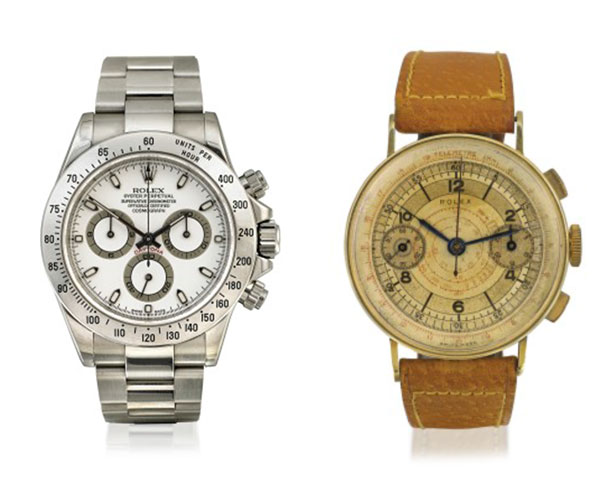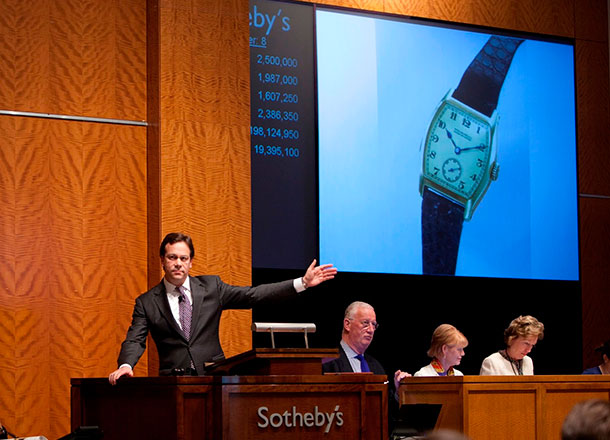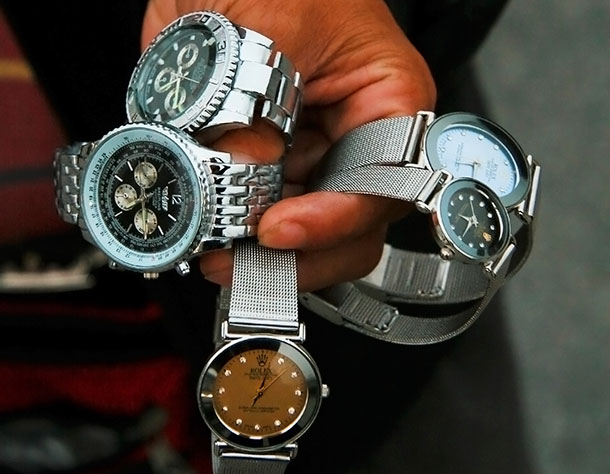While Friday lunching with a clever friend he let me in on a little secret about buying watches and engagement rings at auction. In this instance we’re not talking about eBay, but at the likes of established auction houses where sellers are not called promisenotfakewatch123.
Intrigued, we met with Hamish Sharma, Head of Jewels at Sotheby’s Australia and vintage watch collector Chris Hilton to understand more about buying second-hand watches at auction and what you need to know to ensure you’re getting value for money, and not ripped off.
A growing market…
There is a high demand for watches in the global market. Internationally, Sotheby’s in Geneva, London, Hong Kong and New York all have sales dedicated to watches. There’s continual demand for quality timepieces in Australia, and the market is growing.
Watches are highly sought after for their collectability (rarity) as well as for their aspirational and lifestyle, design features.
Sotheby’s Australia attracts a broad spectrum of buyers when it comes to watches, some collectors looking for rarity and provenance, others seeking a vintage or period watch for fashion and lifestyle reasons.
Aspirational buyers also come to auction to purchase a trending watch in the secondary market at a reduced price- this is a great way to get your hands on something like the currently hot Rolex Daytona.
Benefits and risks from buying at auction…
At auction a buyer can touch and feel the watch and discuss it with the on-staff specialists. There’s no ‘on the spot’ sell, giving you time to evaluate your potential purchase and how much you are prepared to spend.
With auctions you also have the benefit of the catalogue. Entries provide an estimate price so you know roughly what it’s likely to go for when the hammer goes down. Catalogue entries detail what the auction house knows about the watch, including technical specification and history.
If you’re worried about who’s looking over the watches that go to auction then don’t stress. Sotheby’s have specialists inspect all the watches, taking into consideration provenance, documentation and other authentication factors. If you’re still worried, it’s a perfectly normal thing for buyers to bring along their own watch specialist to have a look.
It’s good to remember that when you’re buying at a reputable auction house all items are sold via a General Conditions of Business, something you’re not going to get from eBay or Chrono24.
Avoiding the infamous frankenwatch…
With vintage watches there’s a chance that some parts have been replaced or gone missing-
often due to lack of available parts the piece has evolved and can be interpreted as a ‘Franken-watch.’ If the auction specialists feel that a watch has been ‘frankend’ they will make note of this in the item description and the condition will have been factored into the price estimate.
Hot brands and auctions…

Rest assured there will always be a demand for aspirational brands such as Cartier and Rolex, which are known for their craftsmanship and quality.
Shama tells us there’s a strong rise in men’s collectable watches, including those by Audemars Piguet, Breguet, Jaeger Le Coultre, OMEGA, Patek Philippe and Vacheron & Constantin.
- In September 2012 Sotheby’s sold a rare oversize IWC Schaffhausen wristwatch from the 1940s- also referred to as the Portuguese- for $24,000.
- In December of the same year there was a rare, ‘well loved’ Patek Philippe platinum rectangular wristwatch circa 1930.
- More recently Sotheby’s Australia sold a Rolex Special Edition Royal Black for $39,040.
Some tips to help you start buying at auctions…
Avoid beginner’s mistakes, like not speaking to a consultant, or forgetting to ask questions or conduct sufficient research. You’ll find most auction houses list results from past sales online, making it easy to look up and review past entries and results, and learn more about the item you are considering.
You can register to bid in person at the sale location before the auction begins. You can also bid via absentee, telephone or the internet.
To bid you will need to establish an account with the auction house and provide government-issued proof of identity such as a driver’s license or passport. A bank reference may also be required or a deposit. No monies no watch, you understand.
Costs and fees associated with buying at auction…
Obviously it does not cost to bid, but should you be successful and land that dream watch you’ll be looking at what’s called a ‘buyer’s premium’ of 22% +GST on top of the final auction price.
Be aware that some items may have additional GST but being the secondary market most items are sold without GST on hammer price.
If you want to bust out the Black Amex to pay for your watch then there will be the usual fees, however most auction houses accept direct funds transfer, bank cheques and cash without additional handling fees.
Inside tip…
Shama tells us there’s some great new Cartier watches coming up soon from a retailer who’s no longer stocking the brand – this could be a great opportunity to try your hand at buying a watch at auction.
If you want to know more or register to upcoming Sotheby’s Australia auctions visit www.sothebysaustralia.com.au
Good luck!

